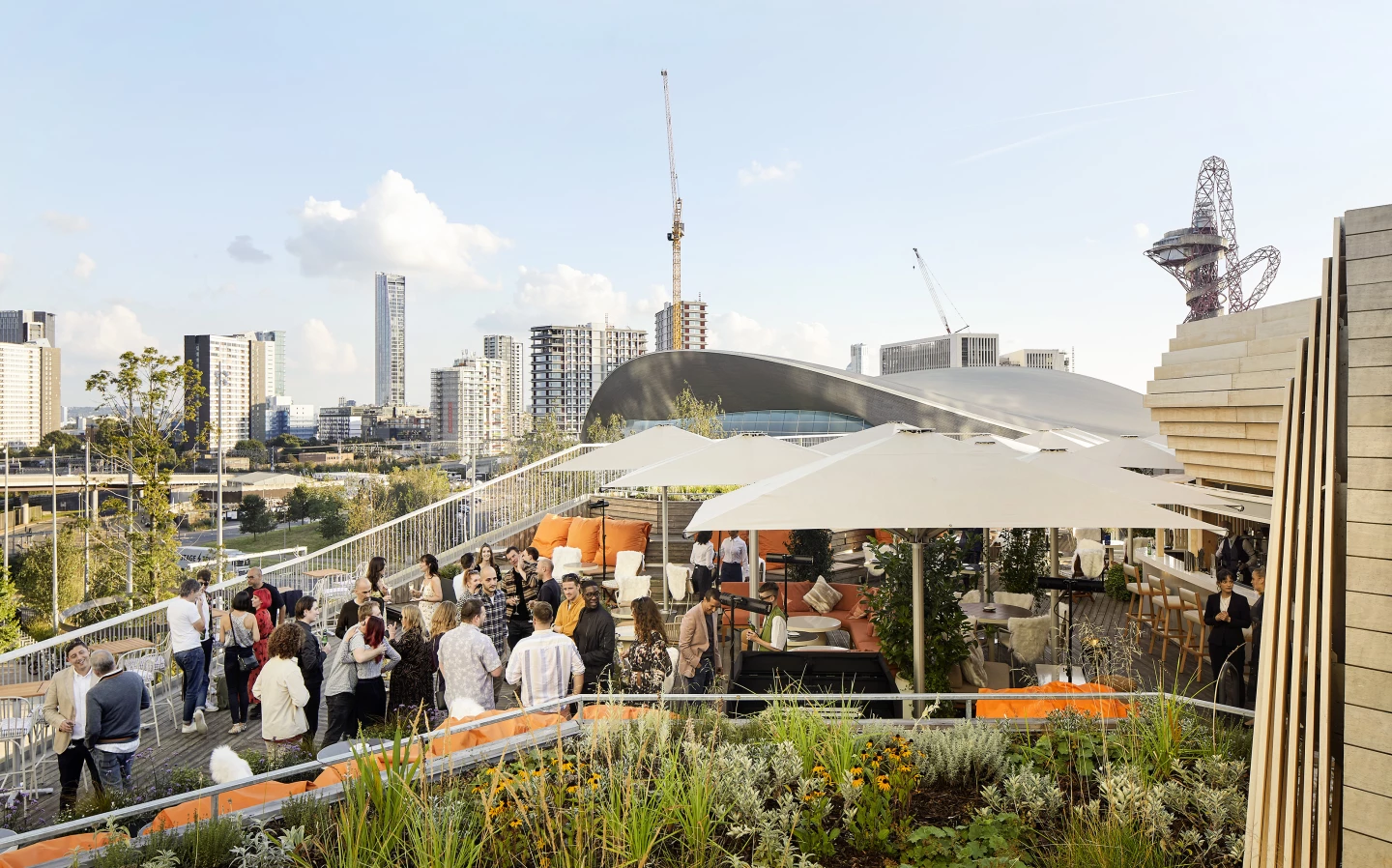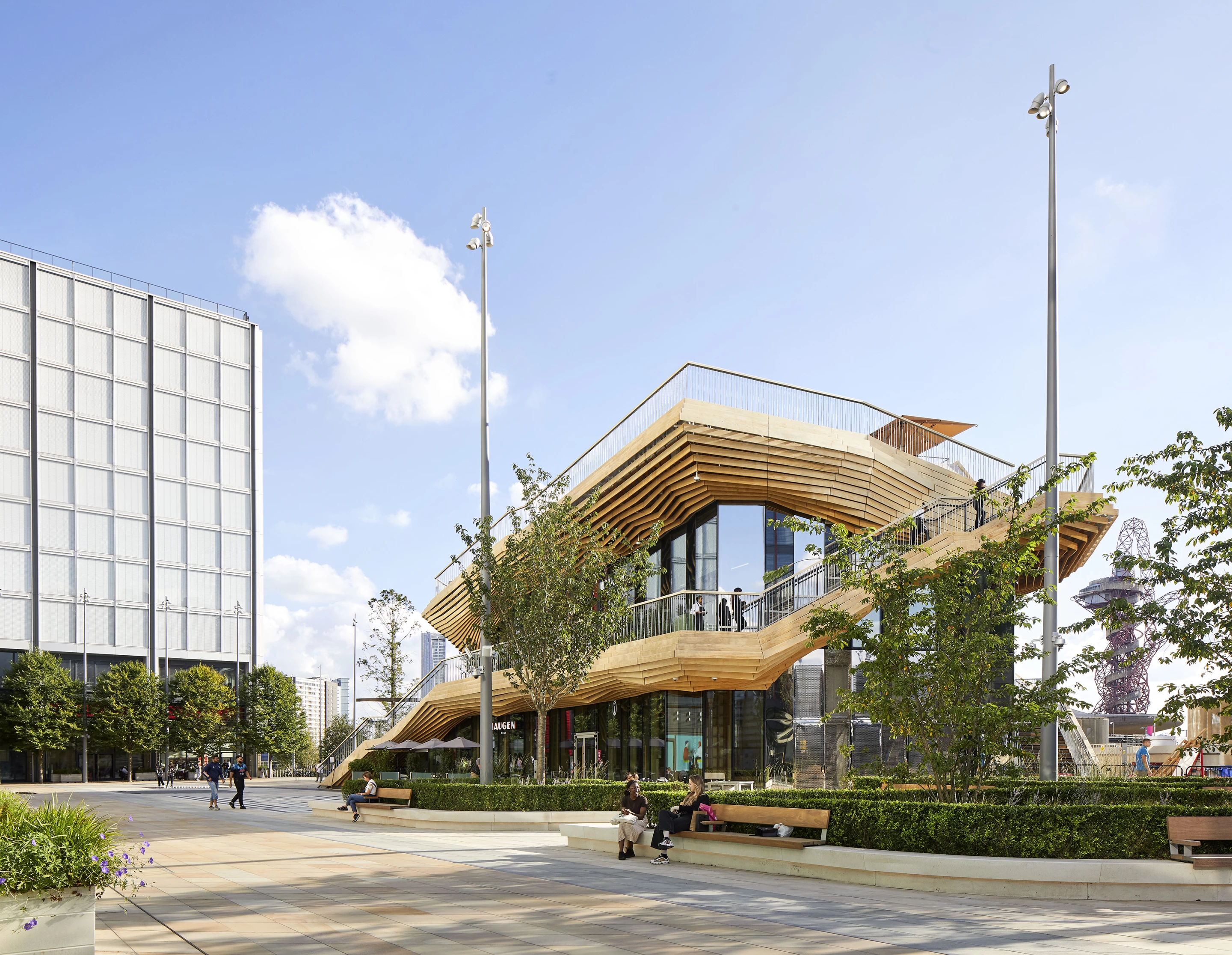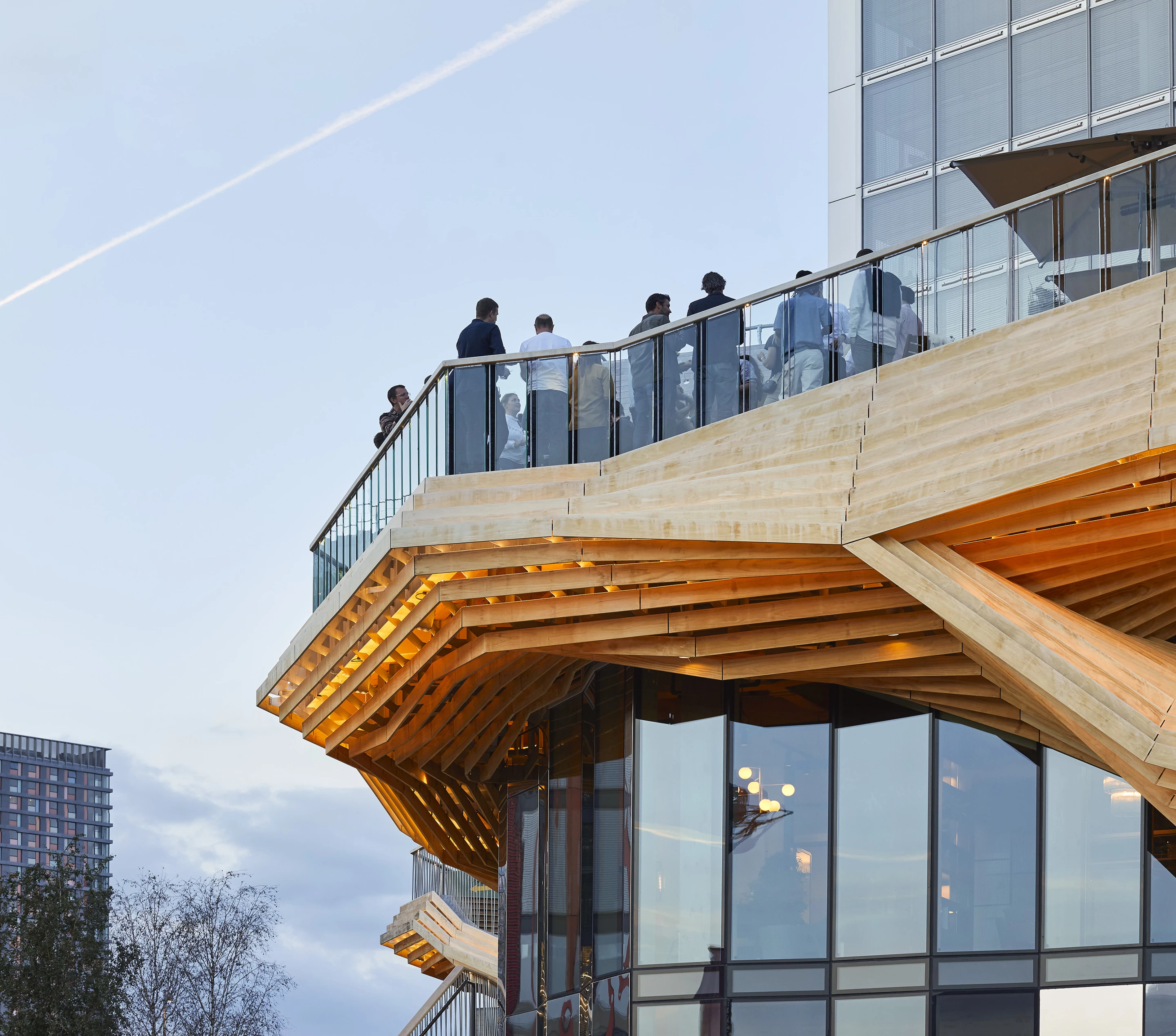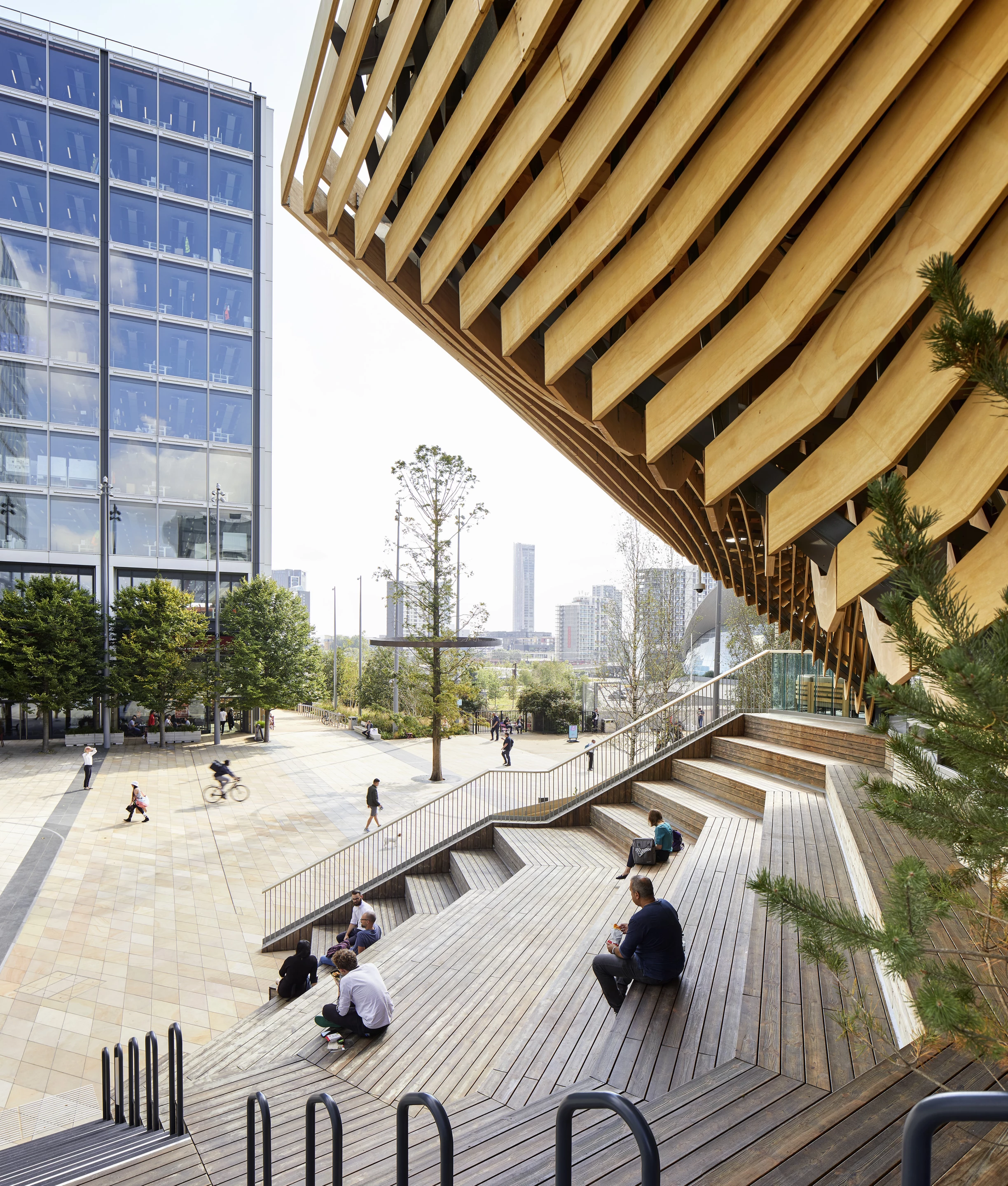Tasked with designing a new restaurant on an awkward site that couldn't support a great deal of weight, architecture studio Acme expertly used engineered wood to create an attractive and lightweight building. The Pavilion also features notable sustainable design and includes solar panels, a partially green roof, and nesting boxes for bees and bats.
The Pavilion is spread over three floors and consists of restaurant space, a visitor center, and a deli (alas we have no interior photos available as of writing), plus there's a few external terrace areas and stepped seating. The site it's situated on in Stratford, East London, is directly above a light rail tunnel that was deemed to only be able to support minimal weight and foundations.
"Constructed using cross-laminated and glue-laminated timber panels, only shallow concrete foundations were needed," explains Acme. "Timber has a much lower carbon footprint than more traditional materials and provides warmth and tactility to the interior. Elsewhere parametrically controlled timber fins have been used to clad the undersides of the projecting slabs to create a continuous soffit that invites and guides visitors to the roof. Native wildflower planting on the rooftop terrace and green spaces enhances the site's biodiversity, creating a food source for pollinators alongside a nesting box for bird and bat species".

This careful approach to the site and the environment is extended to its energy use too. The project has received the highest possible BREEAM rating of Outstanding (a green building standard). It receives power and heating from the local grid-based network, though solar panels reduce its reliance on the grid, while external lighting has been designed to minimize light pollution.
Additionally, the building's air-tightness is also relatively high, helping it maintain a steady temperature with minimal heating or cooling required. All timber used – which included 136 engineered wood sections – was sustainably sourced, and an impressive 99.17 percent of construction waste was diverted from the landfill.
Source: Acme








